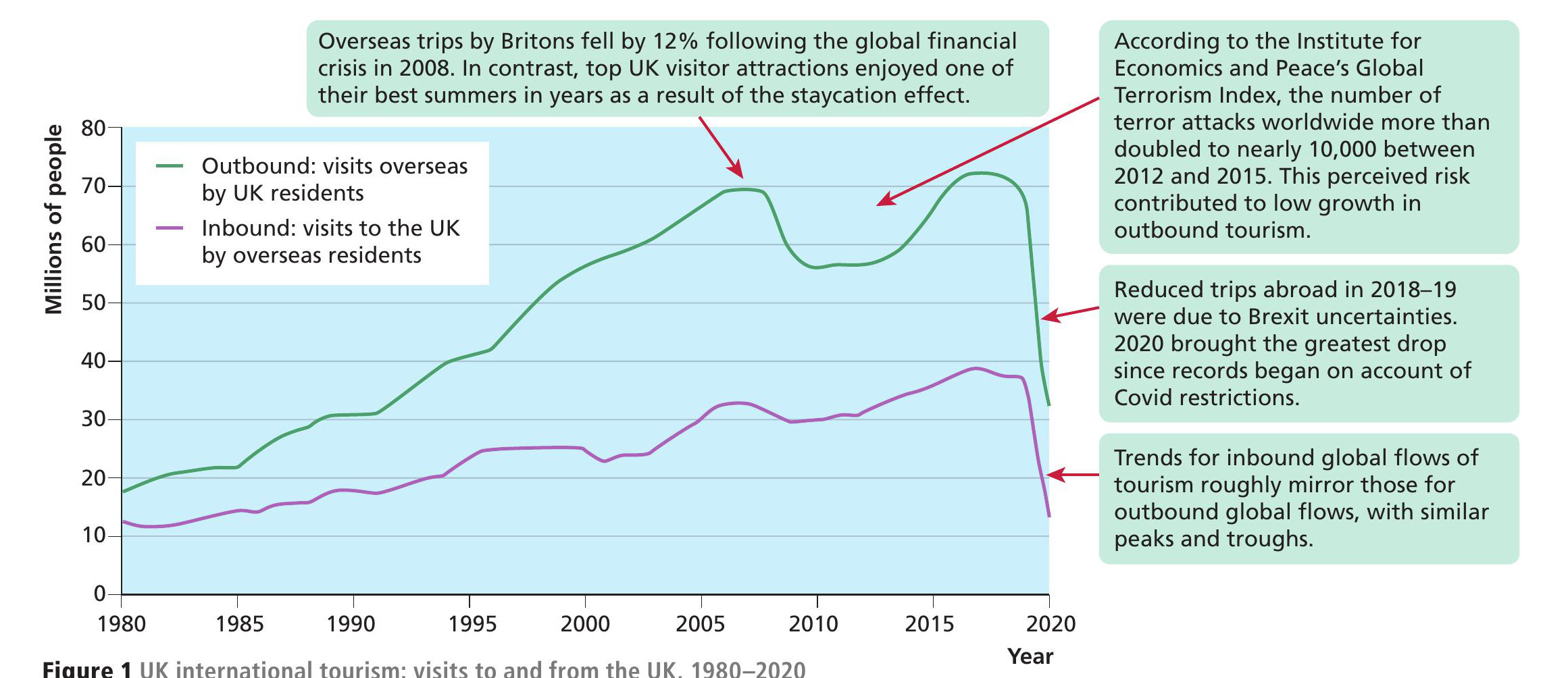
The word ‘staycation’ is relatively new. It is used to describe a holiday trip someone takes in their home country in preference to travelling abroad. Also called domestic tourism, staycations used to be the norm for British people (see Box 1). As recently as the 1960s, less than 10% of UK holidaymakers visited international destinations. This figure rose steeply in the 1980s and 1990s due to a combination of rising prosperity, falling transport costs and easier travel rules.
By 2005, over 60% of UK holidaymakers were travelling abroad at least once a year. Since then, however, new constraints have reduced many people’s willingness and ability to travel internationally (Figure 1). This has brought a relative increase in the popularity of staycations, as more people opt to ‘holiday at home’ (in some case, literally — people who stay in their own house or neighbourhood when taking leave from work may also be classified as ‘staycationers’).
Your organisation does not have access to this article.
Sign up today to give your students the edge they need to achieve their best grades with subject expertise
Subscribe




